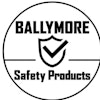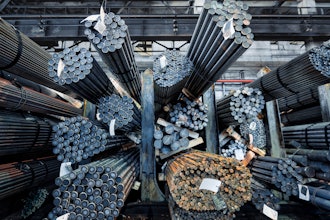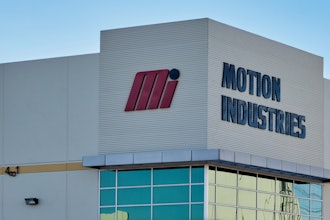Once a product leaves its manufacturer, it enters a world where it can be adultered, completely faked, diluted, relabeled, or repackaged without authorization. Trying to pinpoint the exact vulnerabilities in the supply chain is almost impossible.
Counterfeiters have become increasingly sophisticated at imitating real products, from shoes and handbags to DVD’s, chainsaws, watches, airplane parts, and drugs. The economic impact of infringement upon companies’ intellectual property rights is shocking: the Organisation for Economic Co-Operation and Development estimates the price tag at $250 billion each year.
In response, governments are beginning to allocate more resources to the issue. The United States, the European Union, and nine other countries are working on an agreement to enforce intellectual property rights and decrease the incidence of counterfeit and pirated goods. Recently, Vice President Joe Biden announced a government initiative to combat intellectual property infringement, titled the “Joint Strategic Plan for Intellectual Property Enforcement.” The plan is outlined in a 61-page document that contains more than 30 recommendations. The government is adding 50 FBI agents to address the issue.
Though governments are becoming more aggressive, counterfeiting has taken its toll. In the pharmaceutical industry specifically, the production of counterfeit and substandard drugs not only costs drug companies $75 billion in lost business per year (more than the combined yearly revenue of Pfizer and Merck), counterfeit tuberculosis and malaria drugs alone kill 700,000+ people each year.
Once a product leaves its manufacturer, it enters a world where it can be adultered, completely faked, diluted, relabeled, or repackaged without authorization. Trying to pinpoint the exact vulnerabilities in the supply chain is almost impossible. While the U.S., Europe and other regions with well-developed supply chains are relatively secure, the Internet presents yet another loophole and has become the biggest risk for counterfeits to infiltrate legitimate trade.
Conversely, in developing countries there are a plethora of weaknesses in the supply chain. These include the fact that ports don’t have the resources available for proper inspection, intellectual property laws are often unenforced or non-existent, and products are available in unauthorized markets.
In addition to vulnerabilities during distribution, manufacturing executives need to scrutinize the processes and raw materials used or provide by contract manufacturers. In 2007, Mattel recalled 21 million toys manufactured in China, in part because some of the toys were made using lead paint. In 2008, Baxter’s Heparin incident occurred after a $900 per-pound ingredient was sourced from China for $9 per pound. Though the price was attractive, the raw material from China was toxic and resulted in more than 80 deaths, each of which could have been avoided.
Applying Technology to the Issue
Manufacturers need to be prepared to protect their brand, product, and customers. Technology is needed to differentiate between legitimate products and counterfeits so that fakes can be kept out of the supply chain and out of customers’ hands. Whether you are responsible for ensuring the integrity of your company’s product or enforcing your company’s intellectual property rights, there are technologies that can assist you.
As an example, manufacturing executives in the pharmaceutical industry have tried to ensure a safe drug supply through a combination of laboratory testing and packaging technology. New technologies that have emerged and are helping the industry stay ahead of counterfeiters include the following:
SMS
One of the newest technologies available to combat drug counterfeiting is SMS, or text messaging. SMS solutions work by affixing a unique code to drug packaging. Once a consumer purchases the drug, he or she reveals the code by scratching it with a coin. The consumer then text messages the unique code to a “Mobile Authentication Service” and receives an immediate response that identifies the drug as legitimate or counterfeit. Pilot studies have shown this technique to be effective, though it requires that manufacturers alter the drug’s packaging to accept the unique code.
RFID/e-Pedigree
An electronic pedigree is an electronic document that tracks basic data elements of a drug as it travels through the supply chain. Information such as lot number, potency, expiration, manufacturer, and other data elements are tracked on an RFID tag from the time a drug is manufactured to final dispensation.
The e-pedigree secures the chain of custody, preventing phony transactions and products from getting into or remaining in the legitimate supply chain. Electronic pedigree systems can detect counterfeit and diverted products by analyzing transaction details and suspicious patterns.
The downside is that RFID is costly and like any packaging technology, it does not secure the product itself, making it largely irrelevant in markets where the product is sold without its original packaging.
Spectroscopy
Spectroscopy is less well-known, but has been a game-changer in the industry since becoming available as a portable, handheld instrument. This technology can be used in the supply chain to accurately identify chemicals without direct contact with the substance, through sealed glass, plastic bottles, bags and blister packs at ports of inspection, loading docks, points of sale and manufacturing plants. It has been used by a majority of the largest pharmaceutical manufacturers, as well as regulatory bodies around the world.
Unfortunately, the incidence and cost of counterfeit products is growing rapidly throughout the world. The economic cost to industry is staggering and the toll on human health is unacceptable. Counterfeiters have become increasingly sophisticated, but manufacturers now have an arsenal of tools available that can help protect company and customer.






















